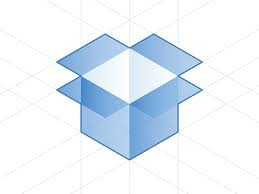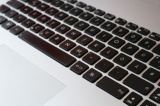Installing Dropbox on Mandriva 2010.2 KDE
April 4, 2011 Reading time: 2 minutes See Comments
 Dropbox is a great idea, and has Linux support, the only problem is that it currently only supports the Nautilus file manager (Gnome). I thought this wouldn’t be such a problem so I loaded it using "urpmi dropbox" in the console or you could use “Install & Remove Software”. The Dropbox icon can then be found on the “Internet” menu.
Dropbox is a great idea, and has Linux support, the only problem is that it currently only supports the Nautilus file manager (Gnome). I thought this wouldn’t be such a problem so I loaded it using "urpmi dropbox" in the console or you could use “Install & Remove Software”. The Dropbox icon can then be found on the “Internet” menu.
It all appeared to work perfectly, Dropbox downloaded its binary file and then I entered my account details and all was good. (Note: You may need to start Dropbox a second time before it downloads the binary, not sure why that was).
Dropbox places an icon in the system tray, clicking on it opens Nautilus and shows you your files. You can add/update and edit your files and it all just works. I thought OK I’ll just use Nautilus for Dropbox and all is good.
Then I plugged in my USB stick and noticed that the Device Notifier was no longer working properly, it was now calling Nautilus instead of Dolphin and not opening the USB devices properly. That wouldn’t do, so this is how I fixed it…
First I removed the Dropbox and Nautilus RPMs using “urpme nautilus-dropbox nautilus gnome-desktop-common libgnome-desktop-2_17 libexempi3″ in the console. This leaves the dropboxd binary file that was downloaded when I ran Dropbox so I can just use that to do what I need. Next from the menu go to “Tools->System Tools->Configure Your Desktop”, click the “Advanced” tab and then double click the “AutoStart” icon. You’ll probably find like I did that the Dropbox entry is still there (If not you’ll need to create one). Click on the Dropbox entry and then click the Properties button, on the Application tab replace the Dropbox command which will be something like “dropbox start -i” with “~/.dropbox-dist/dropboxd” (without the quotes). Logout and Login again.
Now when I start KDE the Dropbox icon automatically shows up in the system tray and even better if you click it now it opens Dolphin and not Nautilus. My Device Notifier also returned to normal. All is good :)
See Comments
Setting up Notebook Hotkeys
July 27, 2007 Reading time: 2 minutes See Comments

I recently set up the hotkeys on my notebook in Mandriva 2007 running KDE. It is fairly simple to do and consists of one script file and then appropriate entries in “Keyboard Shortcuts”.
I created the following file called “command-shortcuts” and placed it in the “bin” directory in my home directory. Make sure to make it executable using “chmod +x command-shortcuts”.
#!/bin/sh
xmodmap -e “keycode 176 = F20″ # Volume up
xmodmap -e “keycode 174 = F21″ # Volume down
xmodmap -e “keycode 160 = F22″ # Mute volume
xmodmap -e “keycode 178 = F23″ # Mail hotkey
xmodmap -e “keycode 236 = F24″ # Web hotkey
xmodmap -e “keycode 162 = F25″ # Play / Pause
xmodmap -e “keycode 164 = F26″ # Stop
xmodmap -e “keycode 144 = F27″ # Previous Track
xmodmap -e “keycode 153 = F28″ # Next Track
xmodmap -e “keycode 115 = F29″ # Win
xmodmap -e “keycode 117 = F30″ # Menu
xmodmap -e “keycode 223 = F31″ # SleepThe keycodes should work for many notebooks. To check they are right for your notebook you can run the ‘xev’ command in a console. The keycode will be displayed for each key you press.
So that the keycodes get loaded at each login, add “/home/{username}/bin/command-shortcuts” to the end of your “.bashrc” file. Replace {username} with your login name.
Now launch “Keyboard Shortcuts” from the “System”, “Conifguration”, “KDE”, “Regional & Accessibility” Menu. Here using the “Command Shortcuts” tab you can assign the “Mail” and “Web” Keys. Using the “Shortcut Schemes” you can assign the the “Win”, “Menu” & “Sleep” Keys. I set the “Win” key to switch to the next desktop, the “Menu” key brings up the KDE Menu and the “Sleep” key issue the logout command.
Finally you can set up the Volume Down, Up and Mute by right-clicking on the Mixer and selecting “Show Mixer Windows”. Then from the “Settings” menu select “Global Shortcuts” and assign the appropriate keys. You can do the same in Amarok for the “Play/Pause”, “Stop”, “Previous Track”, “Next Track”.
Thanks go to Ubuntu user zba78 who posted info on hotkeys at http://ubuntuforums.org/showthread.php?p=1260079.
I would appreciate your feedback if you have comments, corrections or additions to this article, Thanks.